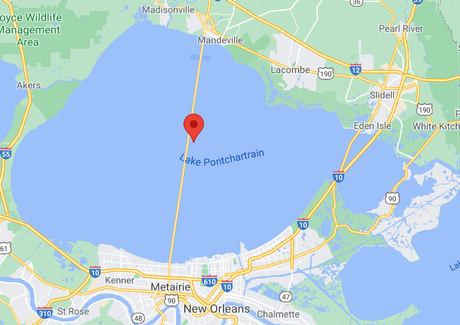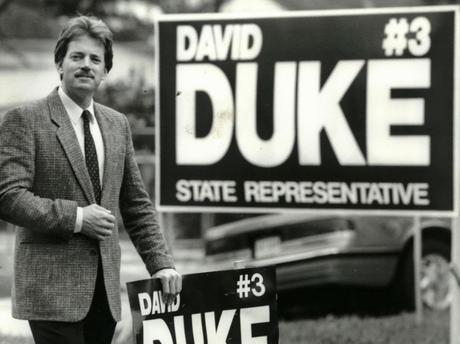 Jace Colby Washington in 2009
Jace Colby Washington in 2009As of July, 2021, Jace Colby Washington has been incarcerated fourteen years. Fourteen years for a crime he did not commit.
His experience provides the perfect illustration of how broken the American criminal justice system has become. The United States locks up more of its citizens, by far, than any other western democracy. Louisiana has the highest incarceration rate in the United States. And Saint Tammany Parish, where Jace Washington was arrested, tried and convicted, is infamous for dishing out the harshest justice, and the stiffest prison sentences, in Louisiana. They don’t call it “Saint Slammany” for nothing.
What happened to Jace Washington is monstrous in the sense of being “inhumanly or outrageously evil”. If that sounds like an overstatement, please read on.
I first wrote about this case in 2010, Friends of Justice published Jacqueling Zimmer’s update in 2019, and a highly detailed summary of the facts was recently published. I will quickly review the highlights of the case below. I will then try to explain how a monstrosity of such bizarre dimensions could play out in the land of the free.
The Jace Washington story in brief
On April 29, 2007, Jose Carlos Matinez-Carpio was murdered in Slidell, Louisiana. New Orleans was still recovering from Hurricane Katrina at the time and Saint Tammany Parish was being used as a staging area for a massive restoration project. Mr. Martinez-Carpio was living in a trailer with six friends by night and working in New Orleans by day. All were refugees from El Salvador, and were undocumented. Most of what they earned was being sent back to their families.
Two men, Glenn Carter and Edric (“E”) Cooper decided to rob the men in the trailer at gunpoint. They assumed it would be a simple grab-and-go operation since these men would likely have lots of cash money and wouldn’t report the crime for fear of arrest and deportation.
Everything went smoothly until Martinez-Carpio, unable to understand that Carter was asking him for money, attacked the intruders with a fork. Caught off guard, Carter fired his weapon, Martinez-Carpio fell to the floor. Carter and Cooper fled the premises, jumped into a Chevy Tahoe, and sped away. Police zeroed in on Carter after a resident witnessed someone in a Tahoe hiding a gun under a pile of debris. Carter was arrested and placed into one of Saint Tammany parishes “squirrel cages”. The three-foot-by-three-foot cell was so cramped it was difficult to sit down or turn around.
After three days in the squirrel cage, deprived, he claims, of toilet privileges, Carter confessed. He and “E” (he didn’t know Edric Cooper’s full name) had done the deed. Carter didn’t want to implicate his friend, but it was the only way to escape the death penalty.
Cooper, by contrast, had no one to rat out. That’s when Jace Washington and Grant Gethers, two young men Cooper knew from High School, entered the picture. The four men drove to the crime scene in Carter’s Tahoe, Cooper said told the police. In this version of the story, Cooper had a 9mm gun, Carter was packing a .45, and Jace carried a .380. Gethers was unarmed.
The police raided the home of Jace’s father and turned up a 9mm handgun. Supplied with this new information, Cooper simply placed the 9mm in Jace’s hands.
Then plenty of DNA evidence from Carter and Cooper was found in the Tahoe, but none from Washington and Gethers. So Cooper changed his story again. This time, he and Carter had driven to the scene in the Tahoe, while Washington and Gethers followed in a second vehicle.
The Sheriff’s deputies in charge of the investigation knew that the El Salvadoran eye witnesses had described only two Black males, between five-foot-nine and five-foot-ten. Carter and Cooper fit that description perfectly. Jace is six-foot-four.
It took over a year for Cooper to get his story straight, but when he finally went to trial, the jury had no way of knowing that the facts alleged in Glenn Carter’s case bore little relation to Cooper’s story. Nor did they learn that the state’s story conflicted with eye witness testimony.
Desperate to avoid a lengthy sentence, Grant Gethers pled guilty and accepted a plea bargain. Jace was also offered a sweetheart deal. With the fact issues blurring more with each passing day, Walter Reed, the Saint Tammany Parish DA, wanted to avoid a third trial.
But Jace Colby Washington wouldn’t plea to a crime he didn’t commit.
In October of 2009, thirty months after the alleged crime, Jace finally went to trial. His attorney attempted to introduce the set of facts used to convict Glenn Carter, but the DA objected and the judge sustained. Only Cooper’s story was allowed in the courtroom.
Walter Reed couldn’t get a unanimous verdict, but, in Louisiana, that wasn’t a problem. In 1898, the Louisiana legislature passed a set of laws allowing the state to sentence thousands of Black men to prison for vagrancy and other misdemeanor offenses. Black jurors tended to vote against the majority when they were fortunate enough make it onto a jury. This problem was solved by decreeing that nine votes out of twelve sufficed for a guilty verdict. Later, the number was increased to ten.
In Jace’s trial, a single juror voted not guilty. It didn’t matter.
Cooper Recants
Following his trial, Edric Cooper experienced a crisis of conscience. On March 4, 2010, he signed a written affidavit admitting that his conflicting statements to the police had been a tissue of lies. “Jace Colby Washington,” the statement said, “was never with myself and Mr. Glenn Carter during the incident . . .”
“My reason for giving the statement as if Mr. Jace Colby Washington [was at the scene] is because he has never been in any kind of criminal trouble,” Cooper explained, “and I know that if I would have told the sheriffs that his participation . . . all the blame would (sic) taken off of me.”
“Glenn Carter and Jace Colby Washington do not know each other,” Cooper explained, “but was made to know each other through my made up statement to the Sheriffs.”
Knowing that Saint Tammany Parish would never allow their only witness to recant, Jace mailed the document to his parents for safe keeping. The next day, his cell was raided and all his personal legal documents were confiscated and never returned.
Two weeks later, Cooper signed a second affidavit. “Mr. Washington nor Mr. Gethers was not present nor aware of the crime,” he said. “I falsely implicated Jace Washington and Grant Gethers because I was scared. On October 13, 2009, I also lied when called as a witness for the State of Louisiana against Jace Washington.”
When Jace’s mother informed me of these developments I was elated. But also worried. Cooper wasn’t just admitting to perjury, he was accusing the Saint Tammany Parish Sheriff’s Office of abetting his scheme.
Threatened with perjury by DA Reed, Cooper recanted his recantation. Jace never got a new trial.
A second cause for hope
Then, in 2018, Louisiana passed a ballot measure outlawing non-unanimous juries. The legislation stipulated, however, that crimes committed prior to 2019 would not be subject to review. Then, in 2020, the US Supreme Court, by a vote of 6-3, ruled that non-unanimous verdicts were unconstitutional in Ramos v. Louisiana. Three Justices, Gorsuch, Sotomayor, and Kavanaugh, acknowledged that split-jury laws were a product of America’s Jim Crow past.
A year later, the Supreme Court ruled that cases tried before their 2020 ruling in Ramos v. Louisiana did not have to be reviewed or retried. It was as if the old law had been perfectly constitutional until the justices said it wasn’t. This Alice in Wonderland reasoning became the law of the land. Louisiana prosecutors could review non-unanimous convictions, of course, they just didn’t have to.
If Jose Carlos Matinez-Carpio had died on the other side of Lake Pontchartrain, Jace Colby Washington’s conviction would have been automatically reviewed. But then, outside Saint Tammany Parish, Jace would never have faced trial. It took a monstrous combination of malice and malpractice to convict him.
Two Different Worlds
Response to the Supreme Court’s bizarre ruling was mixed. Justice Elana Kagan asked what happened to the court’s 2020 conclusion that “a verdict, taken from eleven, is no verdict at all.”
Jason Williams, the newly-elected District Attorney of Orleans Parish, announced that every verdict issued by a split-jury in his jurisdiction would receive a thorough review. To date, twenty-two defendants have won new trials or plea deals.
This was largely thanks to Jason Williams, the newly-elected district attorney of Orleans Parish. Emily Maw, a longtime criminal justice reform advocate, is overseeing the process. Williams and Maw care deeply about the high rates of violent crime in Orleans Parish. The victims, after all, are overwhelmingly poor and Black. But, in their eyes, the challenge of reducing crime rates and the work of reforming an unjust criminal justice system aren’t antithetical, the two initiatives comprise a coordinated strategy.
By contrast, Warren Montgomery, the new District Attorney of Saint Tammany Parish, was overjoyed with the court’s ruling. “The Supreme Court decision is that Ramos is not retroactive,” he exulted. “So therefore, it is improper for us to retroactively overturn those jury verdicts.” And for defendants like Jace Washington, that was that.
The making of a white bastion
Orleans Parish and Saint Tammany Parish are linked by a causeway across the narrowest section of Lake Pontchartrain. I drove it the night the New Orleans Saints won the Superbowl in 2009. You can get across the lake in a matter of minutes. But the people of Orleans St. Tammany parishes live in two distinct and separate worlds.

Politically, Saint Tammany Parish is the mirror image of Orleans Parish. In 2020, Donald Trump beat Joe Biden by 44 points (down from 51 in 2016 thanks largely an increase in minority voting). In Orleans, Biden won by 68 points (up from 66 in 2016).
In 1948, the year New Orleans threw its support against segregationist presidential candidate Strom Thurmond, the Big Easy was a thriving city of 570,000 and Saint Tammany Parish was an underpopulated backwater of 25,000. New Orleans was a third Black, but elections were effectively whites-only affairs.
Everything changed when Black residents started voting in large numbers in the early 1960s. By 1970, New Orleans was 45% Black and white flight was beginning to reshape the demographics of the region. Saint Tammany Parish welcomed thousands of white refugees, especially after the causeway was completed in 1969. By 1990, New Orleans was 62% Black, the population having dropped by almost 60,000 from its peak. Saint Tammany Parish, by contrast, had grown to 145,000.

In 1989, Saint Tammany native and ex-KKK Grand Wizard David Duke was elected to the Louisiana Legislature. Duke claimed that his KKK days were behind him, but his platform was all about white grievance. In 1996, Duke was elected in to the Saint Tammany Parish Republican Executive Committee and served as chairman of that body until 2000.
After decades of white flight, New Orleans had become one of the poorest big cities in America with 55,000 people living in poorly-maintained public housing. Crime rates soared. New Orleans has had the highest murder rate in the nation on twelve separate occasions since 1993. Saint Tammany Parish, by contrast, was affluent and overwhelmingly white. David Duke and his spiritual kin wanted to keep it that way.
Then Hurricane Katrina revealed a shocking racial and economic disconnect. Saint Tammany was hit hard by the storm, but recovered quickly. In New Orleans, Katrina caused 1,800 deaths and $125 billion in damage. The population of the city declined by 140,000 as predominantly Black refugees sought refuge across the nation. Saint Tammany Parish received more than its share of these people. In David Duke country, that didn’t sit well.
Jack Strain, the monstrously corrupt Sheriff of Saint Tammany Parish

In early 2007, short months before he investigated the Martinez-Carpio murder, Sheriff Jack Strain launched into a public rant. His rhetoric was sufficiently over-the-top to make the network news. “For some reason, New Orleans chooses to coddle criminals,” Strain told reporters. “We will not coddle that trash in St. Tammany Parish. If they come to St. Tammany Parish, we’re gonna pursue them, we’re gonna arrest them, our prosecutors are gonna prosecute them, and our judges are gonna convict them . . . If you’re gonna walk the streets of St. Tammany Parish with dreadlocks and chee wee hairstyles, then you can expect to be getting a visit from a sheriff’s deputy.”
Strain seemed to be saying that young Black males would be harassed by Sheriff’s deputies whether or not they were accused of criminal activity. High rates of violent crime in New Orleans, by Strain’s telling, had nothing to do with entrenched poverty; it was a function of the inherent violence of Black people. The solution, therefore, wasn’t a war on poverty but a war on Black males. You were either on the side of law and order (aka white culture), or criminality (i.e., black culture).
This impression was enhanced by Strain’s next unhinged remark. “I know you have some slick lawyers on both sides of the lake who make a tremendous living off of getting these people out of jail,” the Sheriff opined. “Well, we’ve proven in this parish that it’s a pretty difficult challenge for them to make a good living (defense attorneys, that is). My personal opinion is that that’s the first people we should put on a rail and get out of here.”
Strain and his staff allowed Edric Cooper to repeatedly change his story for a simple reason. The more Black males they could remove from the streets, the better.
In 2012, when racist memes and cartoons circulated through the social media accounts of the Saint Tammany Sheriff’s Department, Strain called it much ado about nothing. He conducted “extensive interviews with employees throughout the agency” and concluded that the distressing emails were not “indicative of the core values” of the men involved. As far as Strain was concerned, that was the end of the matter.
As I write, Strain is awaiting trial on federal charges of official corruption and, in the state courts, eight sex crime counts, including aggravated rape and aggravated incest. One habitual criminal alleges that Strain abused him sexually since they were children (Strain is seven years older than his accuser). The witness admits that Strain repeatedly allowed him to wriggle out of serious criminal charges in exchange for sexual favors. “He used to molest me,” the witness told investigators. “I’d say it probably started when I was around 6-years-old up to 12-years-old. And then it got to the point that he started raping me,” the man says.
According to media reports, “Strain is accused of sex crimes with four victims in all, two of them identified in the indictment as being under 12 at the time of the alleged acts and two others — both relatives — identified as being under 18.”
The federal corruption investigation revealed that Strain had been receiving kickbacks from a work-release program for many years. According to the New Orleans Times-Picayune, “Two of Strain’s former top deputies, Clifford “Skip” Keen and David Hanson Sr., have already pleaded guilty to conspiracy to commit bribery in a scheme in which a company owned by their adult children was given a contract to run a work release program in the Slidell area. Their children funneled money back to their fathers who then gave it to Strain, according to court documents.”
Over the years, Strain and friends illegally raked in $1.2 million in public funds.
Walter Reed, the man who gave “criminal prosecutor” a new meaning

Walter Reed, the prosecutor responsible for ensuring that a Saint Tammany jury in the dark during the trial of Jace Colby Washington, is just finishing up a four-year prison term. Reed was found guilty on eighteen charges of corruption. Convicted in 2016, Reed didn’t see the inside of a prison cell until 2019. A friendly judge ruled that, unlike Jace Washington and every other criminal tried in the parish, Reed could remain in the free world pending appeal.
If federal sentencing guidelines had been followed, Reed would have received between nine and eleven years for his egregious crimes. But a second kind judge figured four years would be sufficient. Reed was found guilty of bilking the IRS our of over $40,000, illegally pocketing $572,000 from the DA’s office, and purloining an additional $600,000 from other victims. Reed entered into a retainer agreement with the Saint Tammany Parish hospital that netted him $30,000. It is unclear what services he provided to the hospital since invoices were never submitted. Reed claimed that the hospital had hired him in his personal capacity, but the hospital claimed (correctly, it turned out) that they hired the parish DA’s Office.
If the system refuses to work for people like Jace Washington, it works splendidly for men like the disgraced Saint Tammany DA. Reed was delighted with his soft four-year sentence. “Like every adversity in my life I’m going to try and rise above it and make something positive out of it,” he told reporters without the slightest hint of apology. “I hope to teach a bible study. I hope to contribute. This is not the end of my life. I’m going to go and do my time. And come back and start a whole new life.”
Unfortunately for his cell mates, Reed didn’t stick around long enough to share his gems of biblical wisdom. His attorney requested that, due to health concerns, Reed be allowed to complete his sentence at home. A third nice judge thought that was a splendid idea and, just a few days ago, the prosecutor returned to his family and his own warm bed.
Monsters by design
At first glance, we might wonder how men as thoroughly corrupt as Jack Strain and Walter Reed were ever elevated to positions of public trust. Thus far, it hasn’t occurred to anyone that men capable of rape, incest, tax fraud and kickback schemes might also be guilty of perverting justice? The case of Jace Colby Washington is Exhibit A.
The monstrous machinations used to convict Jace Washington exceeded the powers of ordinary public officials. It takes a full-blown psychopath to pull off stunts of this magnitude. So why were these men elected in the first place?
Strain and Reed were elected, and repeatedly re-elected, by out-toughing their opponents. When Strain and Reed said they were going to crack down on Black criminals (and that’s always who they were talking about) voters took them at their word.
The voters of Saint Tammany can’t clutch their pearls and swear they didn’t realize Strain and Reed were monsters!” Yes, they did. They advertised as such. That’s why you elected David Duke to the Louisiana Legislature and made the man chair of the Parish Republican Party shortly before Jace Colby Washington was railroaded.
But Saint Tammany Parish is an exaggerated case of American injustice. Shortly after a Klansman became a state legislator in 1989, a New York Times reporter asked Louisiana novelist, Walker Percy for an explanation.
“Don’t make the mistake of thinking David Duke is a unique phenomenon confined to Louisiana rednecks and yahoos,” Percy said. “He’s not. He’s not just appealing to the old Klan constituency, he’s appealing to the white middle class. And don’t think that he or somebody like him won’t appeal to the white middle class of Chicago or Queens.”
David Duke, Jack Strain and Walter Reed (and a certain politician who shall not be named) are monsters created in our own image. We turned these men loose on America. They are our responsibility. And until we face that ugly fact, men like Jace Washington won’t stand a chance.
